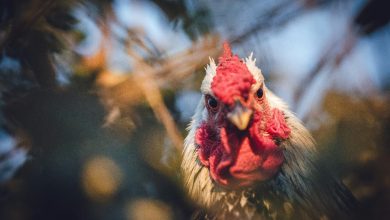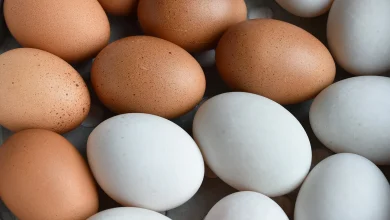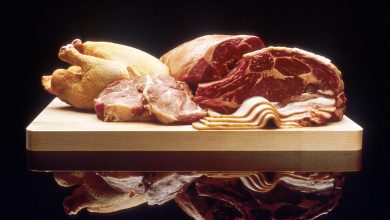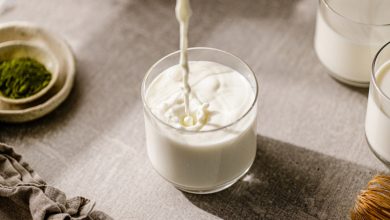Genome editing in poultry Industry
Bhupamani Das, Abhinav Suthar, Ankit Prajapati and R. M. Patel Department of Clinics and Medicine, College of Veterinary Science & A. H., SDAU, Sardarkrushinagar-385535
It is important for a successful breeding company to carefully weigh and consider the application of new technologies for the enhancement of production performance. Appropriate use of new technologies can result in increased genetic progress, and improvement of traits that can be difficult to measure using traditional technologies. New technologies do not replace existing selection methods. They are applied in conjunction with the more traditional selective breeding tools to improve accuracy and efficiency, utilize new sources of genetic variation and overall enhance the genetic progress. Thus, the addition of any new technology adds costs to a breeding program and both benefits and costs must be carefully considered. Genome editing, which allows specific desired changes to be made directly in the genome of poultry.
Precision genome engineering tools and their use in chickens:
The use of PGE tools was first described almost 2 decades ago with the demonstration of targeted integration of exogenous DNA at double stranded breaks (DSBs) induced by rare-cutting endonucleases in eukaryotic cells. Since this original paper 3 major classes of PGE tools have been described. They are zinc finger nucleases (ZFNs), transcription activator-like effector nucleases (TALENs), and clustered regularly interspersed short palindromic repeats (CRISPR), which are all used to introduce DSBs and allow targeted genome editing.
Non PGC culture approaches for gene editing in avians:
It is clear that the most recent breakthroughs in the generation of genetically engineered birds have come from the use of PGC culture. PGC cultures have been used for generating gene KOs using gene targeting, TALENS and CRISPR. However for many agricultural and model avian species and lines, PGC cultures are not available and alternate approaches are required.
| Transgenic chicken | Affiliation of the research group | Country |
| Transgenic chickens carrying a benign defective subgroup A leukosis virus | Avian Disease and Oncology Laboratory, USDA Agriculture Research Service | USA |
| Transgenic chickens expressing active β-lactamase in the egg white eGFP expressing chickens | 1. AviGenics, Inc., Georgia BioBusiness Center, Athens
2.The Roslin Institute and Royal Dick School of Veterinary Studies, University of Edinburgh 3. Department of Physiology, Catholic University of Daegu School of Medicine
|
USA
UK
South Korea |
| Hens specifically expressing therapeutic proteins in the oviduct | The Roslin Institute and Royal Dick School of Veterinary Studies, University of Edinburgh | UK |
| Production of transgenic chickens expressing a tetracycline-inducible eGFP gene | Department of Physiology, Catholic University of Daegu School of Medicine, Daegu | |
| Short-hairpin RNA against Influenza expressing chickens | Department of Veterinary Medicine, University of Cambridge, Madingley Road, Cambridge | UK |
| Transgenic chickens expressing human extracellular superoxide dismutase | Laboratory of Dermatology-immunology, The Catholic University of Korea | South Korea |
| Chickens with humanized immunoglobulin genes | Crystal Bioscience/ Ligand Pharmaceuticals Inc | USA |
Conclusion
Along with the development of PGE tools improvements in the technologies that enable access to the germline to generate modified lines of birds have also occurred. These include advances such as more refined protocols for PGC culture and the delivery of PGE tools to PGCs, direct injection of genome editing tools into the bloodstream of early embryo, and the transfection of PGE tools directly into sperm. It is reasonable to foresee that these techniques could be applied to any avian species that captive breeding is possible and a reasonable amount of genome sequence data is available. Obtaining modified avian species through the culture and in vitro modification of PGCs has advantages, including that a recipient embryo can be treated to ablate resident PGCs, improving gonadal colonization rates of the modified donor PGCs, thus leading to a higher rate of fully modified offspring. The only constraint of this approach is the need for species specific development of PGC culture conditions as prior work has shown that PGC culture conditions can vary greatly between species. Direct injection has the advantage of shortening the time frame for producing a modified chicken as there is no retrieval, culture, in vitro modification, or selection of PGCs since the modifications made to the PCGs occur in situ. Sperm transfection assisted gene editing (STAGE) reduces timeframes even further as the first generation of animals will carry the modification, however it is still in the early stages of development and it is not yet clear if it is as flexible, efficient or robust as PGC culture or direct injection. Together all three methods make generating targeted modifications in a wide variety of avian species possible.
Future perspectives
The role of host genes in the susceptibility of chickens to different pathogens was mostly investigated in vitro. Preliminary in vitro investigations provide solid information about the role of these genes prior to the generation of fully gene edited chickens. New technologies including CRISPR/Cas9 make the process of gene editing easy and highly efficient in contrast to the well-established process of homologs recombination. Although gene editing in mammals, particularly mice and pigs, is vastly advanced, gene editing in chickens is entering the golden age. For instance the generation of Cas9-expressing pigs will provide a powerful tool for the study of biological processes, while this was not done yet in chickens, it seems to be beneficial and may be used in the future to dissect unknown gene functions faster and more easily.
Therapeutic applications using human monoclonal antibodies produced from humanized chickens may be beneficial over in vitro approaches lacking affinity maturation. In addition, production of antibodies in chicken eggs represents an economic and stress-free method for the production of specific antibodies. Using chicken eggs to manufacture specific proteins in eggs seems interesting especially since it may allow improvement of digestibility of sugar complexes in feedstuffs; however, this application may be thwarted by critics that claim the inedibility of the product.
Several advantages are provided by newly invented gene editing technologies including the simplicity of design and application combined with high efficiency. Understanding the host cell behavior during host-pathogen interactions may help targeting pathogen specific receptors and viral cellular transport. The determination of new target genes associated with disease susceptibility should fill the research gap and open the door for new therapeutical approaches. Although the debate about using genetically modified animals in food production will continue to be stimulated, we may obtain new breeds of chickens in the future that are resistant for specific pathogens. We speculate that spending more efforts connecting gene editing technologies with the prevention of infectious diseases will change the way we use to fight pathogens and will probably improve the animal welfare.




